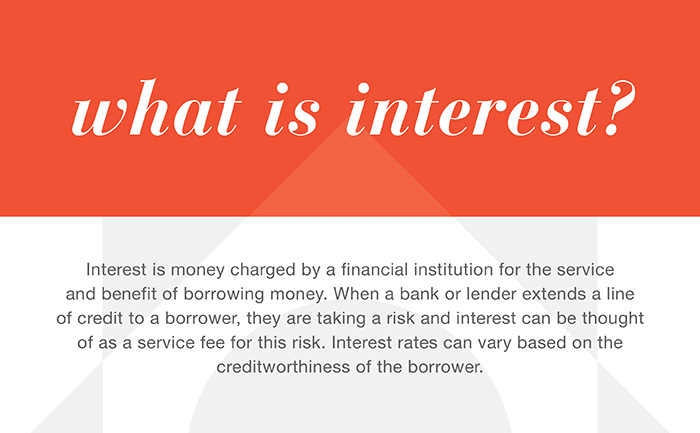Banking 101: What is interest?
Whether you’re trying to make a purchase, pay off an existing loan, or build credit, borrowing money may be a great solution. Before you commit, it’s important to understand the terms of the loan, specifically the interest.
So, what is interest? Interest is money charged by a financial institution for the service and benefit of borrowing money. When a bank or lender extends a line of credit to a borrower, they are taking a risk and interest can be thought of as a service fee for this risk. Interest rates can vary based on the creditworthiness of the borrower.
Any legitimate lender is required to disclose the terms of a loan before you agree to borrow money but understanding (and sometimes deciphering) those terms can be a challenge.
Below we guide you through three types of interest to give you an advantage in making informed decisions about which loan is right for you.

Simple interest
Sometimes referred to as “regular” interest, simple interest is the amount of interest due on a loan.
For example, if you borrow $1,000 at a 3% fixed annual interest rate, you will pay $30 in interest per year. When considering any loan, it’s important to know if the interest rate is fixed or variable.
- Fixed rates are locked in, so in the example above, the rate would stay at 3% for the life of the loan.
- Variable rates indicate that the rate can fluctuate to either a higher or lower rate through the life of the loan.
Another factor to be aware of with a simple interest loan is if there are any penalties for early payoffs. Without these penalties, you can save money on interest by paying off your loan before it is due in full.
Accrued interest
A good way to think of accrued interest is to equate it to the time in a payment period. As time in the period increases, so will the amount of interest that is owed or “accrued.”
For example, if the amount of interest that you’re charged each month is $30, you’re paying $1 per day in that period until the money is paid back. If the lender is paid on the 24th of the month, the amount of interest will be $24.
Compound interest
Compound interest occurs when the principal (or original amount borrowed) and the interest are combined to create a new balance. The new balance is then used to determine an interest rate to be charged. This type of interest is referred to as “interest on interest” as it is compounded.
Compound interest rates are most often attached to credit cards, which have variable rates. Be sure you’re aware of what the various rate boundaries, especially the maximum you can be charged.
Westfield Bank is personally invested in your banking success. Since our founding in 2001, we’ve embraced the idea that sharing knowledge with every customer we serve builds trust and ultimately promotes your financial growth.



